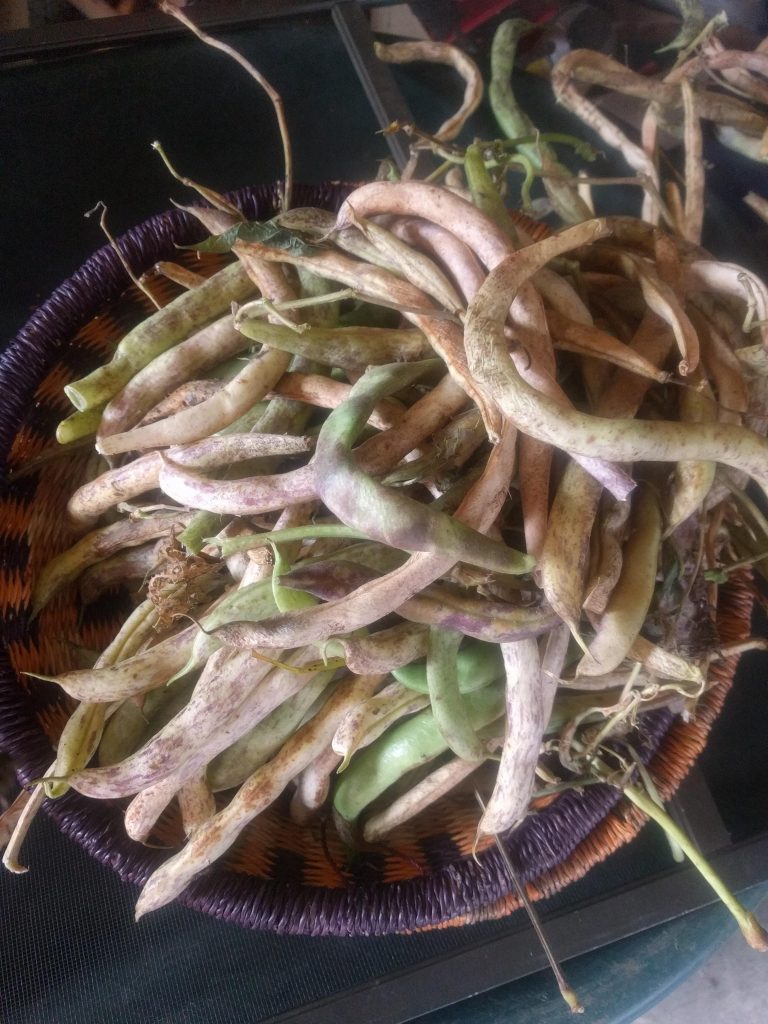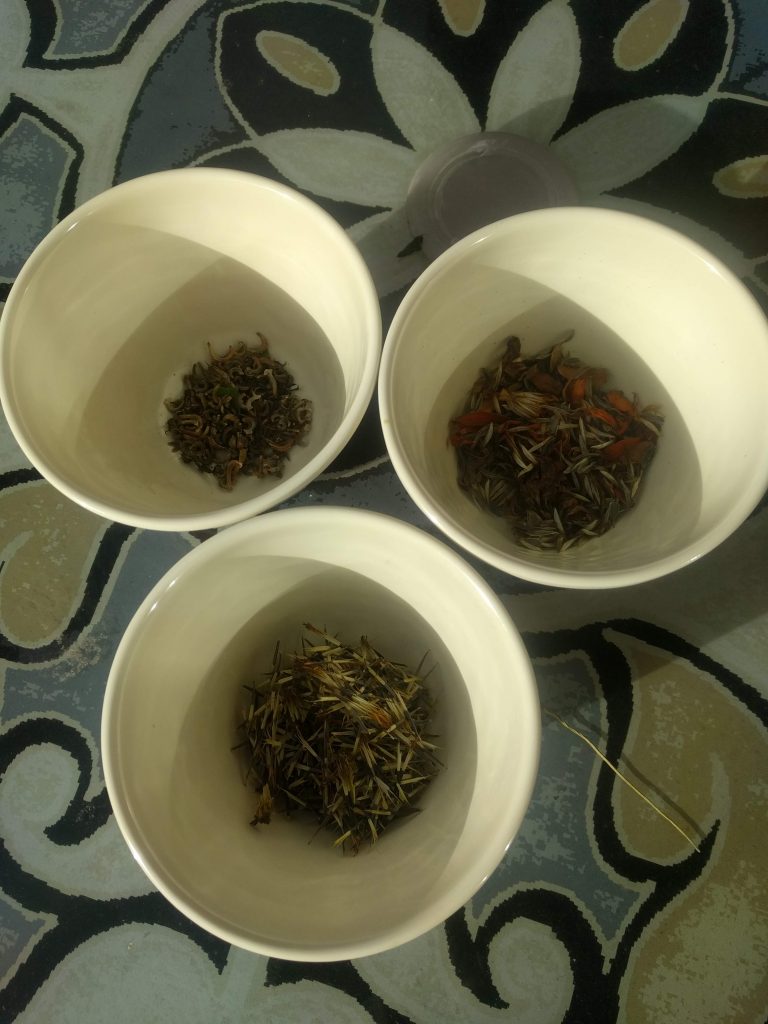This has been a year of change with the garden and some lessons learned, some good, some not so good. And along with my garden, the reports from Granddaughter’s garden that I helped design and did the planting guide, I’ve made some decisions. The journal needs to be updated so that in the spring, when it is time to plan, I remember my lessons. Last weekend while talking to Son 1 on our socially distanced meet up, he described his A-frame trellis he made for his tomatoes. I tried the single leader method this year with tall poles, but the tomatoes won again and some production and harvest were lost. He built long 4 foot wide beds with sufficient path between them. Put the trellis in the middle and planted on both sides of it. He has the advantage that his yard is flat where my garden is anything but flat, but I have a blade on my tractor that is 5 feet wide and I think if I take down the fencing, I can terrace my garden. We are not lacking for large stones that could be the retaining walls between long beds. If I did that, an A-frame like he described could be built and set and the tomatoes trained through the open lattice work which would give them more air and more light. I think shorter versions of it might work for peas and cucumbers that also tend to overwhelm my efforts. When he and his wife were doing the grounds work, stone masonry, and waiting for the shell of the our house to be complete so they could turn to the interior finishing, the garden which they started was much larger and was long raised mound beds ignoring the slope by just leveling the tops of the mounds. Returning to that plan might be the easiest method for me to use, but I still have the paths that get so weedy even when I put down cardboard or newspaper first. But I have been using old hay in the paths, so I have been setting myself up for a problem there.
The compost pile was moved this year and a box built where it had been. That box gets shaded from the asparagus in the morning and the garage in late afternoon, so that box is going to be removed, the compost pile started there again and the space where it is now will be incorporated into a long bed with the asparagus at one end. The peppers had enough space and they did fine. The tomatillos were trained up a garden stake and tied but late season, they had gotten so tall they were falling all over the bed they had shared with beans early in the season, so that wasn’t a big deal. The ground cherries that I wanted to try were just planted too late. I gave them about 20 days longer than the package said they needed, but it wasn’t enough, so they will go in with late spring plantings. The fall peas were not trellised like the spring peas, the package said they didn’t have to be, but they are a fallen tangled mess that the slugs have found, so I’m probably not going to get many if any fall peas.
It may be time to open the passage way from the chicken run to the garden and turn them loose in there instead of the yard and let them clean up bugs and seeds, scratch up the weeds before tackling the reorganization plan.
Today and tomorrow are the last two days of a very warm, dry start to November. Cooler, more seasonal temperatures and rain are due beginning Wednesday and lingering through the weekend. Taking advantage of the beautiful morning, the last of the beans were pulled for next year’s seed and the plant skeletons tossed on the compost pile.

I love how the pods become speckled with red. They are now spread out on a raised screen in the garage to finish drying. Once dry they will be packaged in a small jar or bag for next spring’s planting. That is one seed that is easy to save and pure as they are the only variety of bean I planted and the neighbor’s gardens are far enough away and separated by woods on both sides according to the Seed Saver’s book.
While out there pulling them, the ground cherry plants were pulled and put in the burn pile, the marigolds are dead, so seed head were gathered for next year and the plants with the remaining seed tossed into the chicken run, though they are out in the yard and don’t realize it yet.

They will sit out for a few days to ensure they are thoroughly dry before packaging them up for next spring.
I should go harvest Zinnea and Calendula seed too before it begins to rain, though the Calendula usually self seeds and plantlets can be dug and moved once they are up. Harvesting some seed would be insurance though. . . .
I’m back, my thoughts sent me back out to harvest more flower seed and to open the chicken run to the garden for the winter.

Zinnea, Calendula, and Marigold seed drying for storage. By opening the garden to the hens, I’ve basically closed the book on the 2020 garden. It was a good one, productive with lessons learned.
